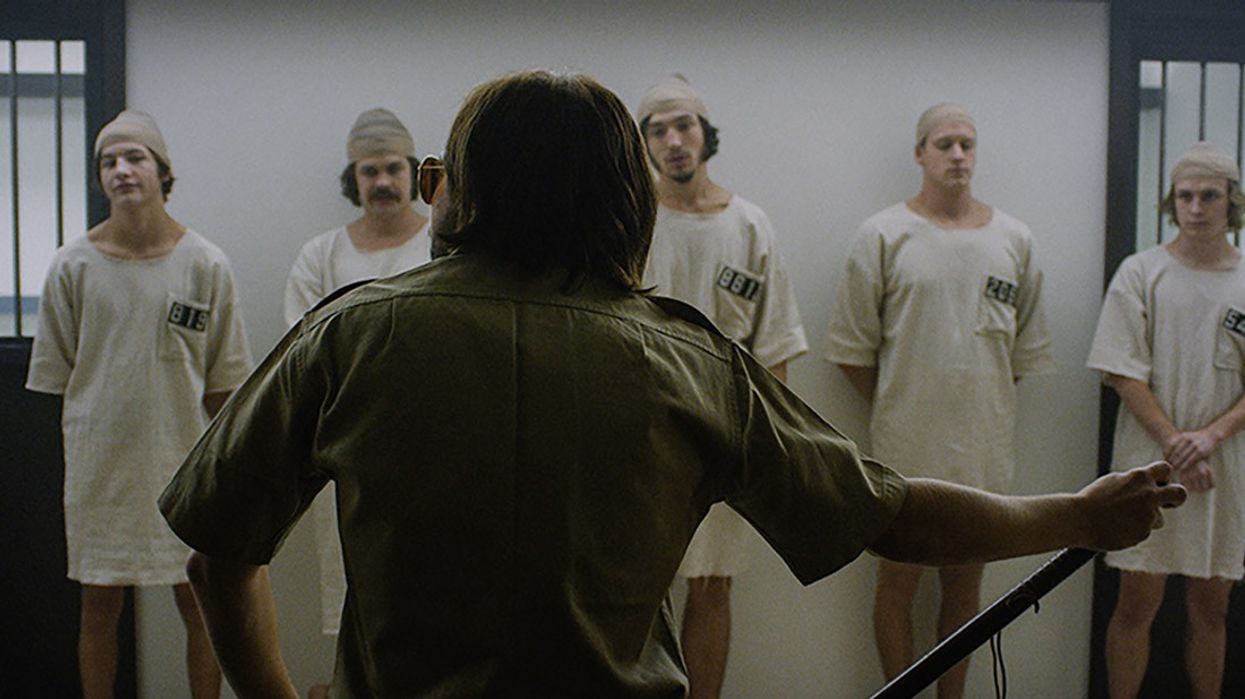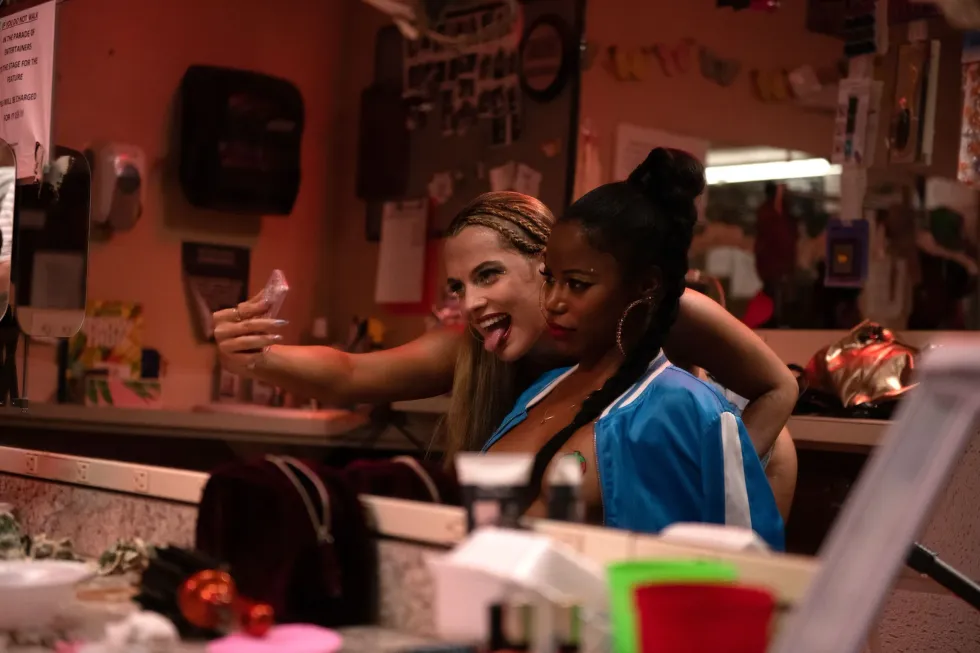'The Stanford Prison Experiment' Screenwriter Tim Talbott Talks About This Truly Twisted Tale
In 1971, Dr. Philip Zimbardo recruited 24 male undergraduates to participate in a psychological experiment where they would assume the randomly assigned roles of prisoners and prison guards. The results were shocking. And Hollywood has been trying to make this movie ever since.

Even this current film, The Stanford Prison Experiment, with consultation from Dr. Zimbardo himself, took a very long time to come together. As part of our current series of interviews with screenwriters of Sundance 2015 U.S. Dramatic Competition films who are not the directors, I had the opportunity to interview Tim Talbott via email about his writing experiences on the long road of this captivating, real-life psychological drama.
NFS: To say this film took a long time to make is a gross understatement. You were originally hired to write the script back in 2002. Is that correct?
Talbott: I first met on the project in late 2002, but I wasn’t actually commenced to start writing until the fall of 2003. I spent a great deal of time researching and didn’t actually sit down to write until the late summer of 2004.
NFS: Can you tell us about your work on the script then and through the intervening years until it went into production this past August?
Talbott: Early on, we all collectively decided that the best way to tell this particular story was to stay as close to the actual history of the experiment as we possibly could. So that meant watching and reading everything I could get my hands on that had been published since the early 70’s. Dr. Zimbardo provided me with a wealth of original documents and logs written during the experiment as well as twenty plus hours of grainy black and white video shot by the omnipresent camera at the end of the hallway. As I waded through and digested all this material, I basically laid out a detailed timeline of those six days so that I had a definitive idea of what happened on each day and the individuals involved.

It took me a little over four months to write the script and my first draft came in at a whopping 265 pages, which is insane, but it was a complete and exhaustive record of what happened. After that, the director who was attached at the time and his assistant helped me to cut the script down to 128 pages, which was still long, but manageable. For the next year or so, as we were preparing to go into production, we consulted with Dr. Zimbardo and his wife Christina Maslach and worked on getting the details of their relationship right.
After that we came close to getting the film made a few times, but kept running into roadblocks until the company that was producing the film, the now defunct Maverick Films, went out of business. I believe that was in 2008 or thereabouts. From 2008 to 2012, it was simply dead. But behind the scenes, our producer Brent Emery was still trying to make it happen and got Kyle Patrick Alvarez involved. I did a polish for Kyle in the spring of 2013, then didn’t really hear much more about it until the spring of 2014 when Brent told me it looked like it was gonna finally come together. Of course, I didn’t believe this until I stepped on the set in August of last year.
NFS: Producers have been trying to make a movie about the Stanford Prison Experiment ever since it made the news in the early 1970s. Why do you think it has taken so long for what seems like such a compelling true story to make it to the big screen?
Talbott: I think it had to do with the approach. The people who tried to make the film before us were always trying to make the story bigger than what it was, to romanticize it, to turn it into a true life or death situation or even a melodrama. I only ever read one of the previous attempts and it was all about two best friends, one is chosen as a guard, one is chosen as a prisoner and then the guard tries to steal the prisoner’s girlfriend while he was locked up and -- well, it just seemed kinda silly to me. And initially, I was skeptical of this project when it was first pitched to me. I felt that there was simply no way anyone could put me in a classroom with fake bars on the door and ever convince me that it would ever be anything other than that. Only when I got into the research did it become apparent that the truth of what happened was far more compelling than anything I could fictionalize.
NFS: Is it a bit surreal that it took twelve years to get this script into production, but now it’s premiering at Sundance a mere five months after the producers announced production would start in late August 2014? How are you adjusting to this sudden whirlwind of activity on this film?
Talbott: My head is still spinning. The fact that this movie even exists is a miracle. If you had asked me even a year ago if I ever thought it would get made, my answer would have been no way, never.
NFS: Did you work with director Kyle Patrick Alvarez on the set of the film? If so, what was your working relationship with him?
Talbott: I was able to spend a decent amount of time on set, mainly because we shot close to where my day job on Chicago Fire is and I could go over after work and on weekends. I find Kyle to be an exceptional director and a really great person. How he managed to pull this off with so many actors on set at once and so little time, I’ll never quite comprehend. And he’s such a calming presence on set. He knows what he wants and he knows how to get it. I’ve never been on a film or TV set that was as relaxed and non-stressed out as on this one. And from day one, Kyle and the producers and everyone involved encouraged me to be there as much as possible, which hardly ever happens with writers.
NFS: Since first starting on this project, your writing career has spanned the gamut of South Park and the Robotard 8000 script Balls Out with Malcolm Spellman, as well as more recent TV dramas such as Medium and the aforementioned Chicago Fire. How did these and other screenwriting gigs impact your work on The Stanford Prison Experiment over the years?
Talbott: With feature films you never know when, if ever, they’re going to get made. So you just do the work and move on and if more work is required, you figure out how to get it done. I will say that it is kind of funny to go into meetings where people ask you about your work and you get to tell them you worked on both South Park and something like Stanford and watch their gears grind. It’s like no one can fathom the idea that a writer can write more than one kind of material, especially not dramas AND comedies. Personally, I just like to write things that interest me and I’m a fan of all kinds of genres and I’ve been fortunate to be able to work in several different ones.
NFS: Tell us about your screenwriting process: How do you decide on the story you want to tell? Once you start working on a story, what steps do you take to get to a draft of a screenplay?
Talbott: My process seems to vary from project to project. You never know when you're going to stumble across a sliver of an idea and just decide to run with it. But I’m a big proponent of procrastination, because even when you’re not sitting at your desk writing, you’re still percolating ideas. And maybe by virtue of driving to the supermarket or taking a walk or hanging out with your friends, the real world will influence your percolating ideas. I’m not big on outlining (except in TV where it is pretty much a mandatory thing), so I just freeform jot ideas down until the spine of the story takes shape, and once I feel I have a sense of the story I’m trying to tell, I start writing. However, the process of writing something like Stanford or adapting a book is quite different in that it’s all about absorbing information and then figuring out what to add and, more importantly, what to leave out.
NFS: What was the most challenging scene or sequence of this screenplay to write, and how did you finally solve the problem?
Talbott: There aren’t any scenes or sequences that jump out at me as particularly challenging, but I will say trying to keep track of nine different guards and ten different prisoners -- and their numbers --- was ridiculously taxing on my brain. I had to have a crib sheet with names and numbers with me at all times and proofing this script in terms of names and numbers was a nightmare.
NFS: What has been the most unexpected part of your experience of being accepted into Sundance so far?
Talbott: The most unexpected part is that it happened at all, especially with this, of all, projects. The last time I was at The Sundance Film Festival in 2000 I was a filmgoer. I decided that the next time I came to the festival, it would be with a film in competition. I never really thought it would happen, but even though it took fifteen years, I’m beyond excited that it did.
Thanks to Ashton Fontana of 42West for coordinating this email interview. Stay tuned for more screenwriter interviews as Sundance 2015 continues.













